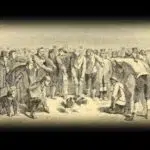Gwyl Mabsant is celebrated every year in Wales on February 9. It is considered to be the most popular rural festival in Wales. It is used to commemorate the local parish saint. Gŵyl Mabsant is Welsh for “Feast of the Patron.” It is also known by some people as the patronal festival or wake of a parish. The annual event developed from dedicating prayers to a program of recreational activities enjoyed by all. The event became a combination of betting, feasting, and drinking. The parish festivals have built up a reputation for their rowdiness over the years.
History of Gwyl Mabsant
Gŵyl Mabsant is a special rural festival that is observed every year in Wales. Gŵylmabsantau appears in historical writing as early as 1470. Several activities take place during the festival. Competitions can range from running races to old women’s grinning matches. There is also cockfighting, blindfolded wheelbarrow driving, betting, feasting, eating hot pudding, and alcohol consumption. Cockfighting requires birds to be trained specifically for the contest. The owner of the winning cockerel is held in high esteem. Large amounts of money are usually bet on the outcome of the cock fights. People also play Bando, which is a team sport that is similar to the modern game of field hockey. The teams strike a ball towards a goal using clubs. The game of fives is also played during the festival. The game is like a primitive form of squash. It often takes place against the church walls.
The unlicensed revelry and alcoholic over-indulgence commonly occurring at the festivals have raised some concerns. Some people have doubted the benefits of the games themselves. These concerns have been voiced since the 18th century, mostly by religious leaders.
Before 1752, the fair was reckoned by Saint’s Day according to tradition or to the official Catholic or Anglican Calendar of Saints. By the nineteenth century, the fair lasted between three days and a week. The rural nature of the fairs led to many variations in the rules of the contests. This usually started disagreements between parishes.
Gwyl Mabsant timeline
New animals such as red deer and wild boar appear in Wales.
Wales faces challenges, including mass unemployment.
Full employment returns to Wales with the Second World War.
Wales has a population of about 3.1 million.
Gwyl Mabsant FAQs
Where does the name Wales come from?
The Anglo-Saxon meaning of Wales is ‘foreigner’ or ‘outsider’. The Anglo Saxons were tribes of people from Germany, Denmark, and the Netherlands.
Which countries are near Wales?
Countries surrounding Wales include Scotland, Northern Ireland, and The Republic of Ireland.
How many regions are in Wales?
Wales has five regions including North Wales, Mid and West Wales, South Wales West, South Wales East, and South Wales Central.
Gwyl Mabsant Activities
Visit Wales
You can take part in the holiday by visiting Wales. The country has a lot to offer.
Learn about Wales
Wales has a very interesting history and culture that you will have fun learning about.
Share the holiday
You can share the holiday with the people around you, online or offline.
5 Interesting Facts About Wales
St David's Day is celebrated
St David's Day is Wales' National Day and is celebrated with parades, food festivals, and concerts.
It has high mountains
The highest mountain in Wales is Snowdon or Yr Wyddfa.
It has many castles
Wales has the most number of castles per square mile in Europe.
There is a Prince of Wales
The Prince of Wales is Prince Charles, son of Queen Elizabeth.
People play a lot of rugby
The National sport of Wales is rugby.
Why We Love Gwyl Mabsant
It creates awareness
The holiday helps to create awareness about Wales. People can better understand the affairs of the country.
It attracts tourists
The holiday helps to attract tourists to Wales. People get to experience the culture firsthand.
It creates support
The festival is a great opportunity for the country. The influx of activity boosts the country’s economy.
Gwyl Mabsant dates
| Year | Date | Day |
|---|---|---|
| 2025 | February 9 | Sunday |
| 2026 | February 9 | Monday |
| 2027 | February 9 | Tuesday |
| 2028 | February 9 | Wednesday |
| 2029 | February 9 | Friday |





























